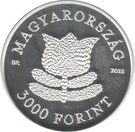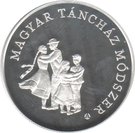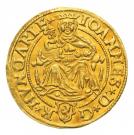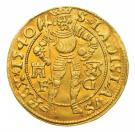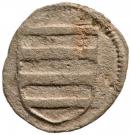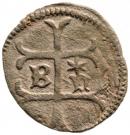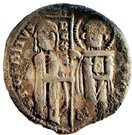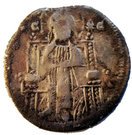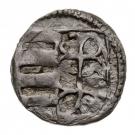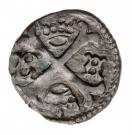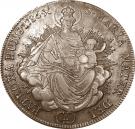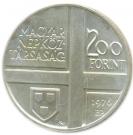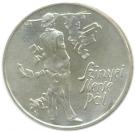Description:
Obverse
The Hungarian Táncház Method became inscribed on the UNESCO intangible cultural heritage list in 2011, on the register of the best safeguarding practices, as a Hungarian model for transmission of intangible cultural heritage. This is the second element of the "Intangible cultural heritage" collector series, started in 2011 with the silver coin depicting the traditional Buso festivities at Mohacs.
The obverse Táncház Method coin depicts an embroidered flower shape motive from Szék (Transylvania, today Sic, Romania), which reflects to one of the sources of the táncház method & movement.
Reverse
The reverse shows one important moment of the method when children learn to dance imitating older people.
Related Coins
¼ Ducat Denár Gold Strike - I. Ferdinánd (1526-1564)
Country: Hungary / Denomination: Denár
(1/4)
Year: 1555 / Material: Gold (.990)
Forint - János Szapolyai (1526-1540)
Country: Hungary / Denomination: 1 Forint
(1)
Year: 1538-1540 / Material: Gold
Obulus - Interregnum (1444-1446)
Country: Hungary / Denomination: 1 obulus
(1/192)
Year: (1445) / Material: Silver
Matapan - Károly Róbert (1307-1342)
Country: Hungarian possesion of Serbia
(Hungarian states) / Denomination: 1 Garas
(1/16)
Year: (1319) / Material: Silver
Obulus - Mátyás Hunyadi (1458-1490)
Country: Hungary / Denomination: 1 obulus
(1/192)
Year: (1461) / Material: Silver
12 Forint - II. Ferdinánd (1619-1637)
Country: Hungary / Denomination: 12 Forint
(12)
Year: 1626 / Material: Gold (.990)
½ Tallér/Thaler - II. József (Joseph II; 1780-1790)
Country: Hungary / Denomination: 1/2 Thaler
(1/2)
Year: 1785-1790 / Material: Silver (.833)
Double Tallér - Rudolf (1576-1608)
Country: Hungary / Denomination: 2 Tallér
(2)
Year: 1578 / Material: Silver (.882)
200 Forint (Pal Szinyei Merse)
Country: Hungary / Denomination: 200 Forint
(200 HUF)
Year: 1976 / Material: Silver (.640)
Denár - I. Ferdinánd (1526-1564)
Country: Hungary / Denomination: 1 Denár
(1/180)
Year: 1562-1565 / Material: Silver (.500)

